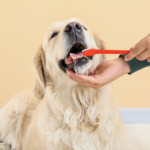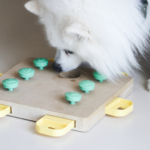Introduction
As devoted pet owners, ensuring the well-being of our canine companions is a top priority. A crucial aspect of their care revolves around understanding what they can and cannot eat. This guide aims to empower dog owners with essential knowledge about safe and unsafe foods for dogs, allowing them to make informed choices for their furry friends.
Common Safe Foods for Dogs
In the realm of pet care, understanding the foods that are safe and nutritious for our dogs is paramount to their well-being. Lean meats such as chicken, turkey, and lean beef are excellent sources of protein, delivering essential amino acids crucial for muscle development. Cooking these meats thoroughly is essential, and avoiding harmful seasonings is key.
Vegetables like carrots, broccoli, and sweet potatoes offer a plethora of vitamins and minerals, serving as both a crunchy and nutritious addition to a dog’s meals. When it comes to fruits, moderation is key; blueberries and sliced apples, minus seeds and cores, make for healthy treats. Fatty fish like salmon and mackerel, rich in omega-3 fatty acids, contribute to a lustrous coat and healthy skin.
Including moderate amounts of plain yogurt and cheese provides beneficial probiotics and calcium, but it’s crucial to monitor for potential lactose intolerance in some dogs. Tailoring the diet to individual preferences and consulting with a veterinarian ensures a balanced and varied approach, contributing to the overall health and happiness of our beloved canine companions.
Unsafe Foods and Potential Risks
Certain foods, harmless to humans, can pose significant risks to our furry friends.
Chocolate, a favorite indulgence, contains theobromine, a compound that can be toxic to dogs. Grapes and raisins, seemingly innocuous, have been linked to kidney failure in some canine cases.
Onions and garlic, staples in many kitchens, can cause damage to a dog’s red blood cells, leading to anemia.
Avocado, while a nutritious choice for humans, contains persin, a substance that may be harmful to dogs in excessive amounts.
Nuts, particularly macadamia nuts, can induce weakness, tremors, and hyperthermia in dogs.
The artificial sweetener xylitol, found in sugar-free products, can cause insulin release, leading to hypoglycemia in dogs.
Salty snacks, in excess, may result in sodium ion poisoning, causing symptoms like vomiting and diarrhea.
The importance of avoiding alcohol and caffeinated beverages cannot be overstated, as these can lead to various health issues, including intoxication and, in severe cases, death.
Vigilance in preventing access to these unsafe foods is crucial, promoting the well-being and longevity of our cherished canine companions.
Challenges in Identifying Safe Foods
The ambiguity surrounding certain foods leaves room for misconceptions and potential risks. While some human foods are generally safe for dogs, others may pose hidden dangers. Navigating this culinary maze requires a keen awareness of a dog’s unique dietary needs and potential sensitivities.
One of the challenges lies in the variation among individual dogs. What might be harmless to one pup could trigger adverse reactions in another. Additionally, misinformation can circulate easily, leading pet owners to inadvertently offer foods that pose risks. The ever-expanding array of pet products and treats further complicates matters, with some marketed as safe but potentially containing harmful ingredients.
Understanding that a dog’s digestive system differs from humans is crucial. Dogs lack certain enzymes to break down foods, making them more susceptible to the adverse effects of certain ingredients. Moreover, the lack of a unified guide on safe and unsafe foods can contribute to confusion among pet owners.
To overcome these challenges, diligent research and consultation with veterinarians are essential. Staying informed about the latest findings and being cautious about sharing human meals with dogs are steps toward ensuring their well-being. By addressing these challenges head-on, pet owners can provide their furry friends with a diet that promotes health, happiness, and longevity.
Addressing Food Allergies and Sensitivities
A primary challenge lies in recognizing the signs of food allergies or sensitivities in dogs. Symptoms can manifest in various ways, including skin issues, gastrointestinal problems, or changes in behavior. Pinpointing the specific allergen or trigger can be a complex process, requiring patience and systematic elimination from the diet.
Another challenge is the wide array of commercial dog foods available, with varying ingredients and quality. Some may contain common allergens like grains or specific proteins, exacerbating sensitivities in susceptible dogs. Understanding how to decipher ingredient labels and opting for limited-ingredient or hypoallergenic diets can be beneficial in managing these challenges.
Addressing food allergies and sensitivities involves collaboration between pet owners and veterinarians. Professional guidance is crucial in devising an elimination diet, conducting allergy tests, or recommending suitable hypoallergenic food options. Pet owners must commit to the process and adhere to dietary restrictions to observe improvements in their dog’s health.
Conclusion
In summary, our guide serves as a valuable resource for dog owners navigating the complex world of canine nutrition. By prioritizing safe and nutritious foods, pet owners can contribute to the overall well-being and longevity of their beloved companions. Remember, a well-fed dog is a happy dog!









